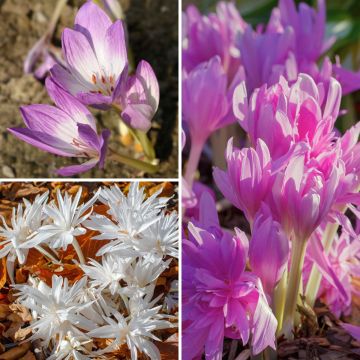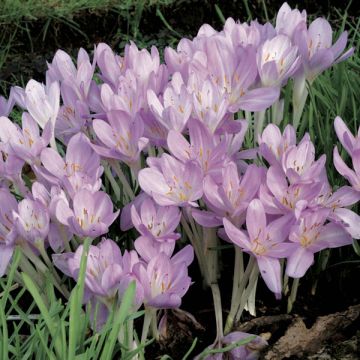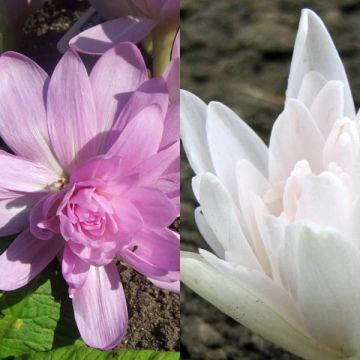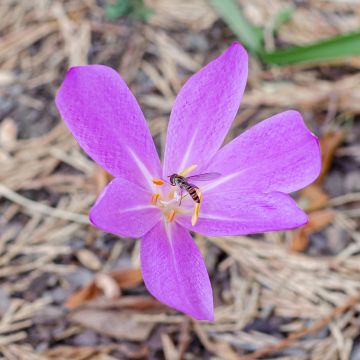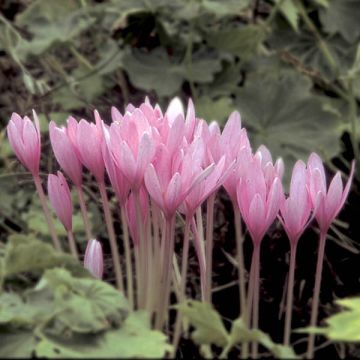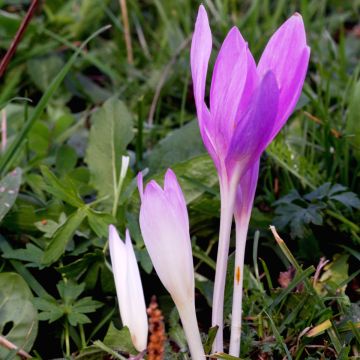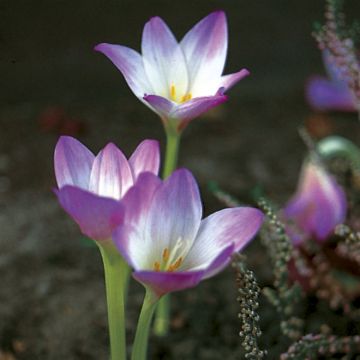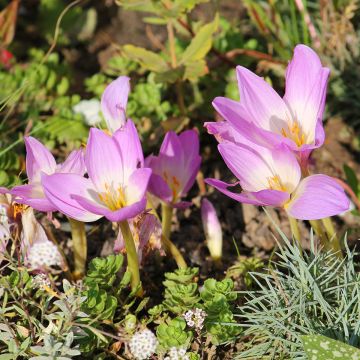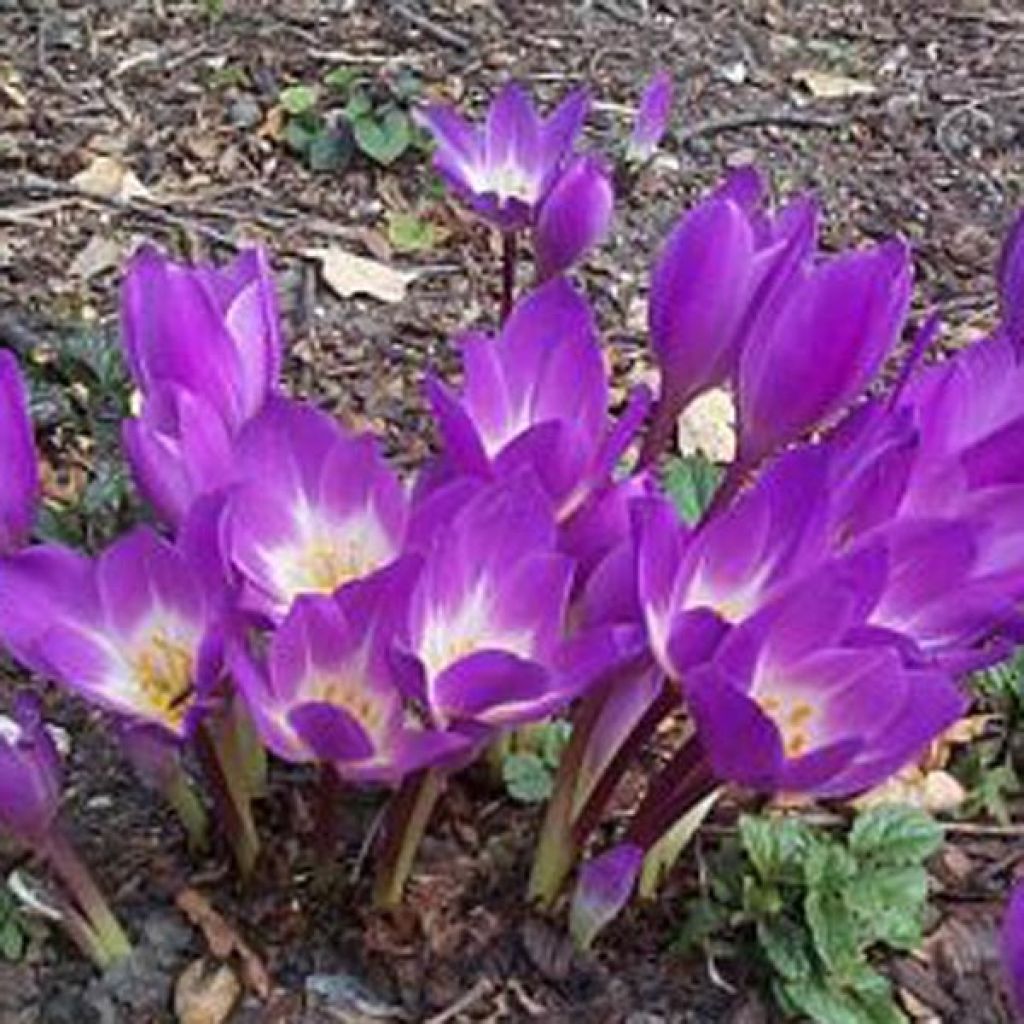

Colchique speciosum atrorubens
Colchicum speciosum Atrorubens - Autumn crocus
Colchicum speciosum Atrorubens
Autumn Crocus, Meadow Saffron
The bulbs have arrived looking very dehydrated. I'm not sure if they will recover.
Véronique , 05/01/2019
Special offer!
Receive a €20 voucher for any order over €90 (excluding delivery costs, credit notes, and plastic-free options)!
1- Add your favorite plants to your cart.
2- Once you have reached €90, confirm your order (you can even choose the delivery date!).
3- As soon as your order is shipped, you will receive an email containing your voucher code, valid for 3 months (90 days).
Your voucher is unique and can only be used once, for any order with a minimum value of €20, excluding delivery costs.
Can be combined with other current offers, non-divisible and non-refundable.
This plant carries a 6 months recovery warranty
More information
We guarantee the quality of our plants for a full growing cycle, and will replace at our expense any plant that fails to recover under normal climatic and planting conditions.

Would this plant suit my garden?
Set up your Plantfit profile →
Description
Colchicum speciosum 'Atrorubens' offers large, colourful and bright flowers in early autumn, with a deep purple-violet hue, animated by a beautiful white throat. This superb descendant of the Balkan colchicum produces one to three flowers per bulb, resembling giant crocuses, emerging directly from the ground. The decorative foliage develops in spring and disappears in summer. This variety with mountain origins is particularly hardy. It thrives in sunny rockeries, undergrowth, as well as in lawns or pots. Its flowers also hold up very well in a vase.
Colchicum speciosum is a perennial plant with a storage organ called a corm, belonging to the Liliaceae family. It is native to subalpine meadows and scree slopes found in the mountains of the Caucasus, northern Turkey, and Iran, up to an altitude of 3000m (9842ft). The 'Atrorubens' form is distinguished by the colour of its flowers, which is more purplish than that of the type species. This very robust and easy-to-grow plant was rewarded by the Royal Horticultural Society in England, a recognition confirmed in 2017.
Although its flowers resemble those of crocuses, the colchicum has 6 stamens instead of the 3 that crocuses have, which are part of the Iridaceae family. A corm is a swollen stem covered with scales, unlike a bulb, which is formed from thickened scales as in lilies or garlic. At maturity, the plant reaches a height of 20cm (8in) when in flower. The foliage of the autumn colchicum Atrorubens emerges in spring, in the form of 3 or 4 large, smooth, glossy, light green leaves, wrapped around a short stem. They measure up to 25cm (10in) in length and 5cm (2in) in width. They disappear in early July, marking the entrance into a dormant state for the corm. Flowering takes place in October, with each corm producing 1 to 3 large flowers that appear on dark purple stems. Each flower is about 6cm (2in) tall and 8cm (3in) wide. They consist of 6 satin-textured tepals, with a pink-purple colour and a white base, gradually opening in a star shape around the yellow anthered stamens.
Colchicum speciosum 'Atrorubens', like all colchicums, is a somewhat nostalgic plant that heralds the arrival of autumn but also often celebrates the advent of a very beautiful late season, one of the most beautiful moments of the year in the garden. It is used in rockeries, in light undergrowth, as well as in lawns alongside cyclamen, black mondo grass, crocuses, and grape hyacinths, in temporary pots, as well as in autumn bouquets with long spikes of amaranth, for example. It thrives better in mountainous climates, with rainy summers and marked winters, and in cooler northern regions where it naturalises easily. All parts of the colchicum are toxic. The plant is not greatly affected by the most common pests in our gardens.
Report an error about the product description
Plant habit
Flowering
Foliage
Safety measures
Botanical data
Colchicum
speciosum
Atrorubens
Liliaceae
Autumn Crocus, Meadow Saffron
Cultivar or hybrid
ingestion
Cette plante est toxique si elle est ingérée volontairement ou involontairement.
Ne la plantez pas là où de jeunes enfants peuvent évoluer, et lavez-vous les mains après l'avoir manipulée.
Pensez à conserver l'étiquette de la plante, à la photographier ou à noter son nom, afin de faciliter le travail des professionnels de santé.
Davantage d'informations sur https://plantes-risque.info
Other Colchicum
View all →Planting and care
Colchicum speciosum atrorubens thrives in full sun or partial shade, in fertile soil that remains moist but not too dry in summer. Reserve a depth of 15cm (6in) when planting and space the young plants 10 to 15cm (4 to 6in) apart. The presence of clay and limestone in the soil is well tolerated. Plant colchicums in July-August so that they can flower in the first year of planting. After planting, leave them in place as they do not like to be disturbed. Water them once a week during the growth period without wetting the leaves and flowers as this colchicum is prone to grey rot and slugs in humid weather. During summer dormancy, stop watering in a moderate climate. Colchicums are not happy in a Mediterranean climate, which is too mild in winter, too wet in autumn, and too dry in summer, where they eventually disappear. After flowering, they go dormant until spring and their leaves will bloom in May and completely disappear in July. Be careful with children as the bulbs are toxic.
Planting period
Intended location
Care
-
, onOrder confirmed
Reply from on Promesse de fleurs
Haven't found what you were looking for?
Hardiness is the lowest winter temperature a plant can endure without suffering serious damage or even dying. However, hardiness is affected by location (a sheltered area, such as a patio), protection (winter cover) and soil type (hardiness is improved by well-drained soil).

Photo Sharing Terms & Conditions
In order to encourage gardeners to interact and share their experiences, Promesse de fleurs offers various media enabling content to be uploaded onto its Site - in particular via the ‘Photo sharing’ module.
The User agrees to refrain from:
- Posting any content that is illegal, prejudicial, insulting, racist, inciteful to hatred, revisionist, contrary to public decency, that infringes on privacy or on the privacy rights of third parties, in particular the publicity rights of persons and goods, intellectual property rights, or the right to privacy.
- Submitting content on behalf of a third party;
- Impersonate the identity of a third party and/or publish any personal information about a third party;
In general, the User undertakes to refrain from any unethical behaviour.
All Content (in particular text, comments, files, images, photos, videos, creative works, etc.), which may be subject to property or intellectual property rights, image or other private rights, shall remain the property of the User, subject to the limited rights granted by the terms of the licence granted by Promesse de fleurs as stated below. Users are at liberty to publish or not to publish such Content on the Site, notably via the ‘Photo Sharing’ facility, and accept that this Content shall be made public and freely accessible, notably on the Internet.
Users further acknowledge, undertake to have ,and guarantee that they hold all necessary rights and permissions to publish such material on the Site, in particular with regard to the legislation in force pertaining to any privacy, property, intellectual property, image, or contractual rights, or rights of any other nature. By publishing such Content on the Site, Users acknowledge accepting full liability as publishers of the Content within the meaning of the law, and grant Promesse de fleurs, free of charge, an inclusive, worldwide licence for the said Content for the entire duration of its publication, including all reproduction, representation, up/downloading, displaying, performing, transmission, and storage rights.
Users also grant permission for their name to be linked to the Content and accept that this link may not always be made available.
By engaging in posting material, Users consent to their Content becoming automatically accessible on the Internet, in particular on other sites and/or blogs and/or web pages of the Promesse de fleurs site, including in particular social pages and the Promesse de fleurs catalogue.
Users may secure the removal of entrusted content free of charge by issuing a simple request via our contact form.
The flowering period indicated on our website applies to countries and regions located in USDA zone 8 (France, the United Kingdom, Ireland, the Netherlands, etc.)
It will vary according to where you live:
- In zones 9 to 10 (Italy, Spain, Greece, etc.), flowering will occur about 2 to 4 weeks earlier.
- In zones 6 to 7 (Germany, Poland, Slovenia, and lower mountainous regions), flowering will be delayed by 2 to 3 weeks.
- In zone 5 (Central Europe, Scandinavia), blooming will be delayed by 3 to 5 weeks.
In temperate climates, pruning of spring-flowering shrubs (forsythia, spireas, etc.) should be done just after flowering.
Pruning of summer-flowering shrubs (Indian Lilac, Perovskia, etc.) can be done in winter or spring.
In cold regions as well as with frost-sensitive plants, avoid pruning too early when severe frosts may still occur.
The planting period indicated on our website applies to countries and regions located in USDA zone 8 (France, United Kingdom, Ireland, Netherlands).
It will vary according to where you live:
- In Mediterranean zones (Marseille, Madrid, Milan, etc.), autumn and winter are the best planting periods.
- In continental zones (Strasbourg, Munich, Vienna, etc.), delay planting by 2 to 3 weeks in spring and bring it forward by 2 to 4 weeks in autumn.
- In mountainous regions (the Alps, Pyrenees, Carpathians, etc.), it is best to plant in late spring (May-June) or late summer (August-September).
The harvesting period indicated on our website applies to countries and regions in USDA zone 8 (France, England, Ireland, the Netherlands).
In colder areas (Scandinavia, Poland, Austria...) fruit and vegetable harvests are likely to be delayed by 3-4 weeks.
In warmer areas (Italy, Spain, Greece, etc.), harvesting will probably take place earlier, depending on weather conditions.
The sowing periods indicated on our website apply to countries and regions within USDA Zone 8 (France, UK, Ireland, Netherlands).
In colder areas (Scandinavia, Poland, Austria...), delay any outdoor sowing by 3-4 weeks, or sow under glass.
In warmer climes (Italy, Spain, Greece, etc.), bring outdoor sowing forward by a few weeks.






























